50 Unmissable Innovations: The Future of Email Campaigns, 2024
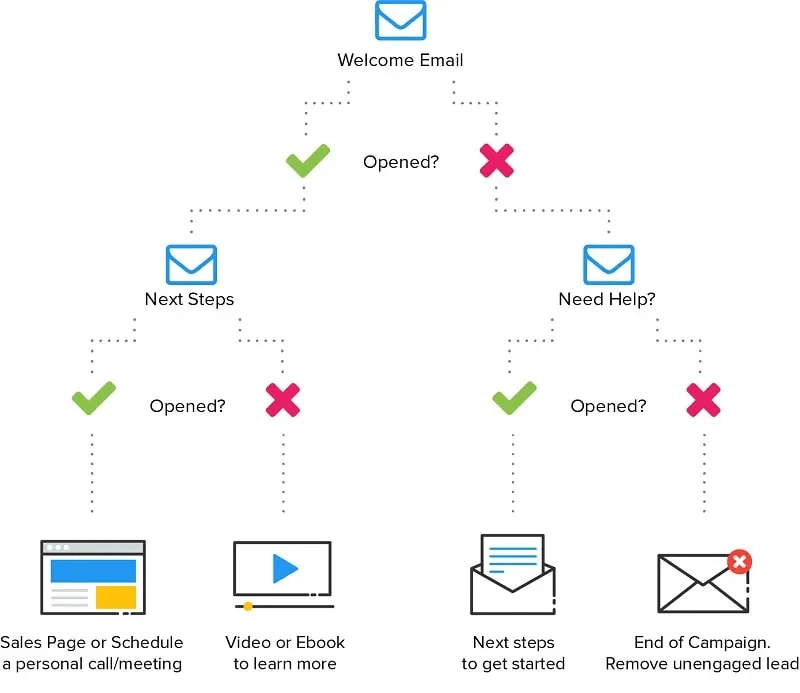
Here are 10 short statistics that highlight the importance of email campaigns in today's digital landscape:
- Email marketing has an average ROI of 3800% (Source: DMA)
- 86% of professionals prefer to use email for business communication (Source: HubSpot)
- Over 293 billion emails are sent and received every day (Source: Statista)
- Personalized subject lines increase open rates by 50% (Source: Yes Lifecycle Marketing)
- Mobile opens account for 46% of all email opens (Source: Litmus)
- Segmented email campaigns have a 14.31% higher open rate than non-segmented campaigns (Source: Mailchimp)
- Email is the preferred method of communication for 72% of consumers (Source: MarketingSherpa)
- 59% of marketers say email is their biggest source of ROI (Source: Emma)
- Automated email messages generate 320% more revenue than non-automated emails (Source: Campaign Monitor)
- Email marketing drives more conversions than any other marketing channel, including search and social (Source: Monetate)
The Power of Email Campaigns
Email campaigns have become an integral part of marketing strategies for businesses across industries.
With the advancements in technology and the ever-evolving consumer behavior, it is crucial for marketers to stay ahead of the curve and embrace the future of email campaigns.
In this article, we will explore 50 unmissable innovations that will shape the future of email campaigns in 2024.
1. Artificial Intelligence (AI) and Machine Learning
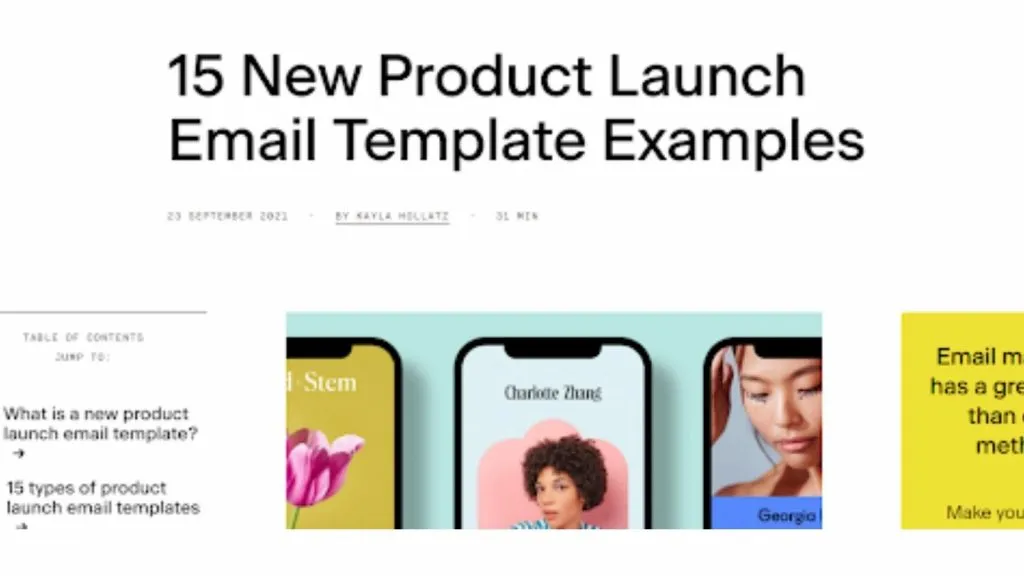
Artificial Intelligence (AI) and Machine Learning are revolutionizing the way email campaigns are created, delivered, and optimized.
AI-powered tools can analyze vast amounts of data to personalize email content, subject lines, and send times based on individual preferences and behaviors.
Machine Learning algorithms can also predict customer actions and optimize email campaigns for better engagement and conversion rates.
I use AtOnce's email subject line generator to increase open rates for our emails:

2. Hyper-Personalization

Hyper-personalization takes personalization to the next level by leveraging AI and Machine Learning to deliver highly tailored email content.
Marketers can use customer data, such as browsing history, purchase behavior, and demographics, to create personalized product recommendations, dynamic content, and individualized offers.
This level of personalization enhances customer experience and drives higher engagement and conversions.
3. Interactive Emails
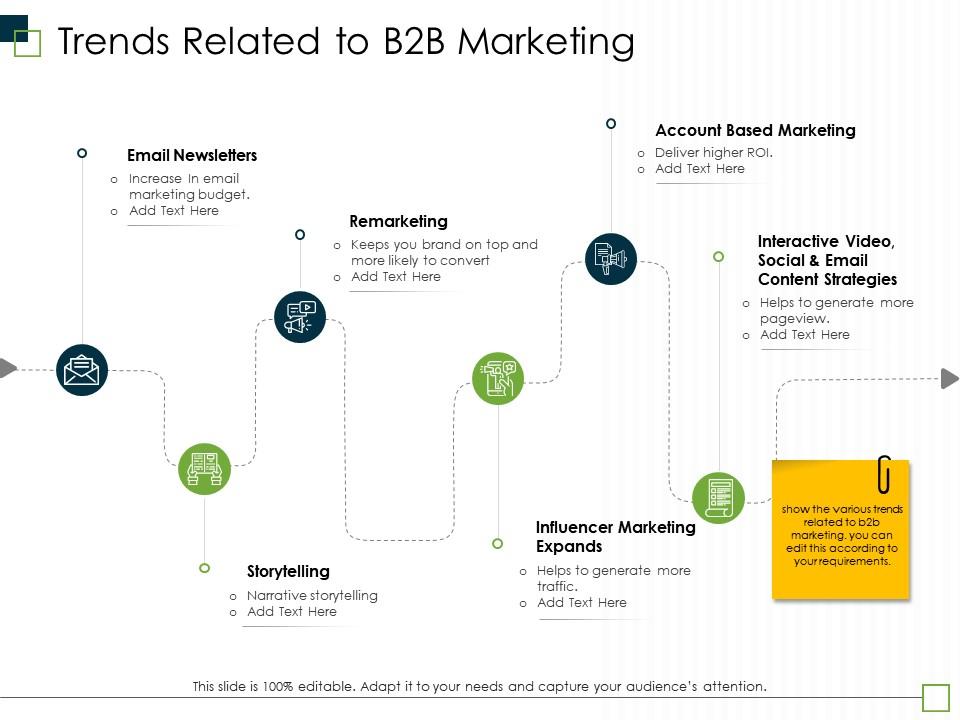
Interactive emails allow recipients to engage with the content directly within the email itself, without the need to click through to a website or landing page.
This innovation enables marketers to create engaging experiences, such as image carousels, product galleries, surveys, quizzes, and add-to-cart functionality, all within the email.
Interactive emails increase user engagement and encourage immediate action, leading to higher conversion rates.
4. Predictive Analytics
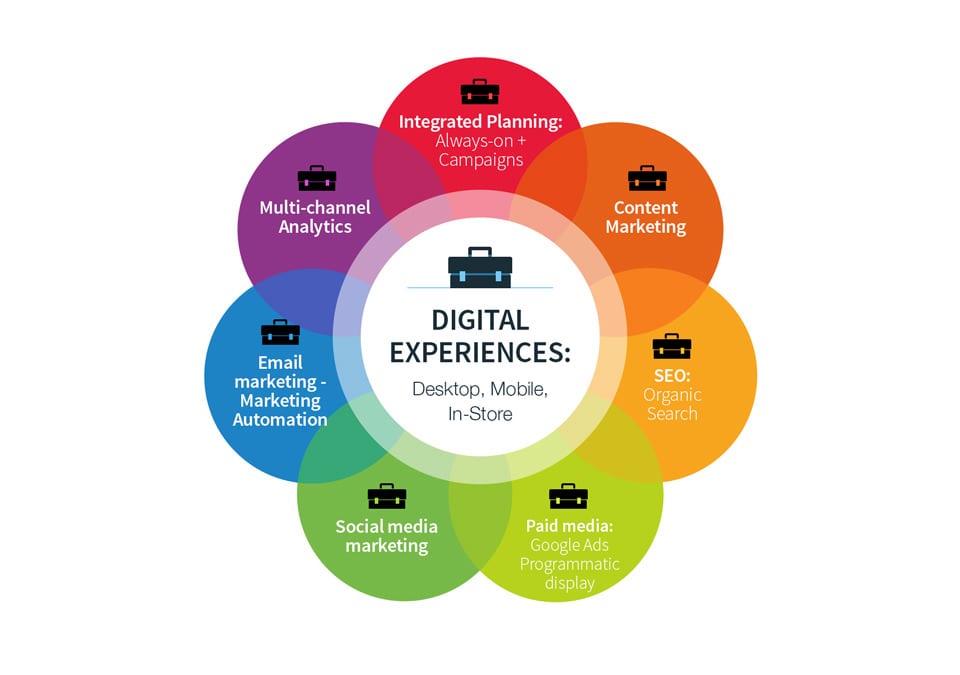
Predictive analytics uses historical data and statistical algorithms to forecast future outcomes.
In the context of email campaigns, predictive analytics can help marketers identify the most effective content, subject lines, and send times based on past performance.
By leveraging this data-driven approach, marketers can optimize their email campaigns for maximum impact and ROI.
5. Advanced Segmentation

Segmentation has long been a best practice in email marketing, but advancements in technology now allow for more sophisticated segmentation strategies.
Marketers can segment their audience based on various criteria, such as demographics, purchase history, engagement level, and browsing behavior.
This granular segmentation enables marketers to deliver highly targeted and relevant content to different segments, resulting in higher open and click-through rates.
Example where I used AtOnce's AI marketing email generator to save hours writing weekly emails:

6. Automated Workflows
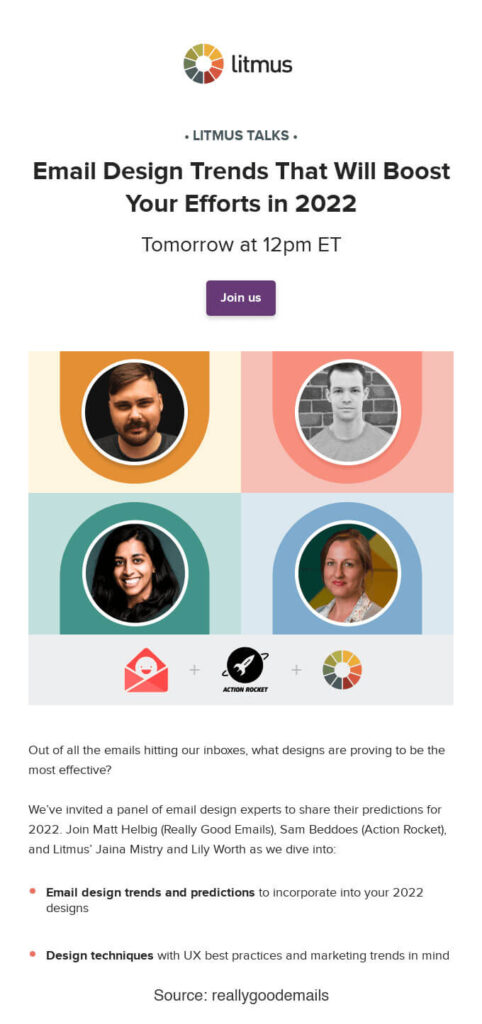
Automated workflows streamline the email campaign creation and delivery process by automating repetitive tasks and triggering emails based on predefined conditions.
Marketers can set up automated workflows for welcome emails, abandoned cart reminders, post-purchase follow-ups, and more.
This automation saves time and ensures timely and relevant communication with customers, leading to increased engagement and conversions.
7. Mobile Optimization

With the majority of emails being opened on mobile devices, it is crucial for email campaigns to be optimized for mobile viewing.
Responsive design, mobile-friendly templates, and concise content are essential for delivering a seamless mobile experience.
Marketers should also consider leveraging mobile-specific features, such as click-to-call buttons and mobile wallet integration, to enhance user experience and drive conversions.
8. Voice-Activated Emails

Voice-activated emails leverage voice recognition technology to enable recipients to interact with emails using voice commands.
This innovation allows users to listen to email content, dictate responses, and perform actions hands-free.
Voice-activated emails cater to the growing popularity of voice assistants and provide a convenient and accessible way for users to engage with email content.
9. Blockchain Technology

Blockchain technology offers enhanced security and transparency for email campaigns.
By leveraging blockchain, marketers can ensure that email content remains tamper-proof and that recipients can verify the authenticity of the sender.
Additionally, blockchain-based smart contracts can automate email campaign processes, such as reward distribution and subscription management, while maintaining trust and accountability.
The Future of Email Campaigns
10. Conversational AI
Conversational AI, powered by Natural Language Processing (NLP) and Natural Language Understanding (NLU), enables email campaigns to have more human-like interactions with recipients.
Chatbots and virtual assistants can understand and respond to customer queries, provide personalized recommendations, and even complete transactions within the email itself.
Conversational AI enhances customer experience and drives engagement and conversions.
11. Sentiment Analysis
Sentiment analysis uses NLP techniques to analyze the emotions and opinions expressed in text.
By applying sentiment analysis to email responses and customer feedback, marketers can gain valuable insights into customer satisfaction, identify potential issues, and tailor their email campaigns accordingly.
This data-driven approach helps marketers build stronger relationships with customers and improve overall campaign performance.
12. Augmented Reality (AR)
Augmented Reality (AR) allows marketers to create immersive experiences within email campaigns.
By integrating AR technology, marketers can enable recipients to visualize products in their real-world environment, try on virtual clothing, or explore 3D models, all within the email.
AR enhances engagement and provides a unique and memorable experience for recipients.
13. Gamification
Gamification adds an element of fun and interactivity to email campaigns.
Marketers can incorporate gamified elements, such as quizzes, puzzles, and challenges, to encourage user participation and reward engagement.
Gamification not only increases open and click-through rates but also fosters brand loyalty and advocacy.
14. Emotionally Intelligent Emails
Emotionally intelligent emails leverage NLP and sentiment analysis to understand and respond to the emotional state of recipients.
By tailoring email content and tone based on the recipient's emotions, marketers can create more empathetic and personalized experiences.
Emotionally intelligent emails build stronger connections with customers and drive higher engagement and conversions.
15. Dynamic Content Optimization
Dynamic content optimization allows marketers to deliver personalized content within the email based on real-time data.
Marketers can leverage customer behavior, location, weather conditions, and other contextual information to dynamically update email content, such as product recommendations, pricing, and offers.
Dynamic content optimization increases relevancy and drives higher engagement and conversions.
Example where I used AtOnce's AI SEO optimizer to rank higher on Google without wasting hours on research:

16. Predictive Personalization
Predictive personalization combines predictive analytics and hyper-personalization to deliver highly relevant content before the recipient even realizes they need it.
By analyzing historical data and customer behavior patterns, marketers can anticipate customer needs and proactively provide personalized recommendations and offers.
Predictive personalization enhances customer experience and drives higher engagement and conversions.
Social media integration allows marketers to extend the reach of their email campaigns and leverage social proof.
Marketers can include social sharing buttons, embed social media feeds, and encourage user-generated content within emails.
Social media integration enhances brand visibility, encourages social sharing, and drives higher engagement and conversions.
18. Video Emails
Video emails enable marketers to incorporate engaging video content directly within the email.
By leveraging HTML5 video technology, marketers can showcase product demos, customer testimonials, event highlights, and more.
Video emails capture attention, increase engagement, and convey messages more effectively than text alone.
19. Predictive Lead Scoring
Predictive lead scoring uses machine learning algorithms to predict the likelihood of a lead converting into a customer.
By analyzing various data points, such as demographics, engagement level, and purchase history, marketers can prioritize leads and tailor their email campaigns accordingly.
Predictive lead scoring improves lead qualification and conversion rates.
20. Real-Time Email Content Updates
Real-time email content updates allow marketers to deliver up-to-date information within the email itself.
Marketers can leverage APIs and dynamic content blocks to automatically update email content, such as pricing, inventory availability, and event details.
Real-time email content updates ensure accuracy and relevancy, leading to higher engagement and conversions.
21. Voice Search Optimization
Voice search optimization ensures that email content is optimized for voice-activated devices, such as smart speakers and voice assistants.
Marketers can incorporate long-tail keywords and conversational language to align with how users perform voice searches.
Voice search optimization increases visibility and drives higher engagement and conversions.
Example where I'm using AtOnce's AI language generator to write fluently & grammatically correct in any language:
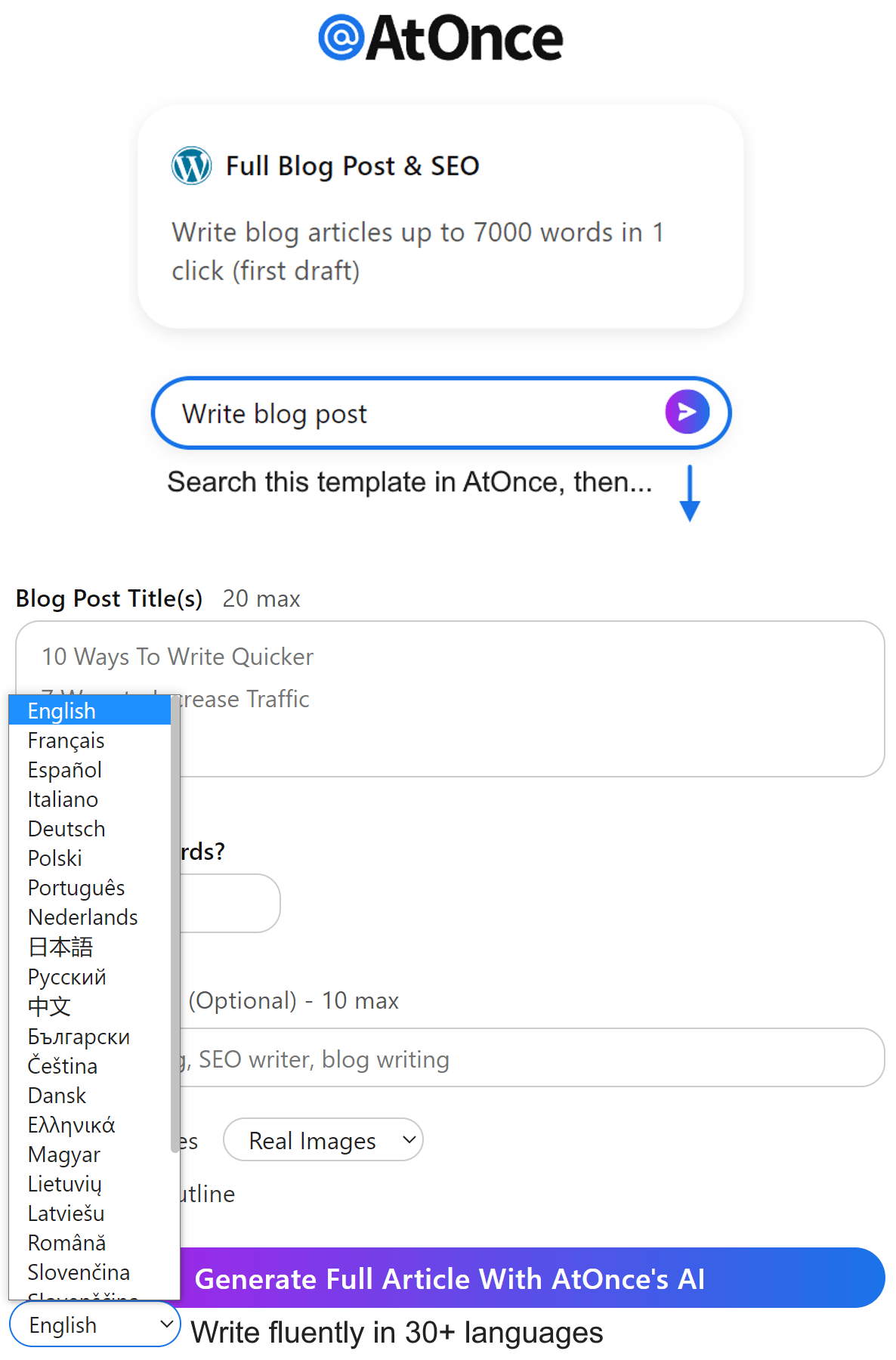
22. Email Retargeting
Email retargeting allows marketers to re-engage with website visitors who have shown interest but did not convert.
By tracking user behavior and sending targeted follow-up emails, marketers can remind recipients of their previous interactions and provide personalized incentives to encourage conversion.
Email retargeting recaptures lost opportunities and drives higher conversion rates.
23. Social Proof Emails
Social proof emails leverage customer reviews, testimonials, and social media mentions to build trust and credibility.
Marketers can include user-generated content within emails to showcase positive experiences and encourage recipients to take action.
Social proof emails increase confidence in the brand and drive higher engagement and conversions.
24. Email Accessibility
Email accessibility ensures that email campaigns are inclusive and can be accessed by individuals with disabilities.
Marketers should follow accessibility guidelines, such as using alt text for images, providing clear and concise content, and using accessible color contrast.
Email accessibility enhances user experience and ensures compliance with accessibility regulations.
25. Dark Mode Optimization
Dark mode optimization ensures that email campaigns are visually appealing and readable when viewed in dark mode settings.
Marketers can adjust color schemes, font sizes, and image contrasts to ensure optimal readability.
Dark mode optimization enhances user experience and ensures that email content remains engaging and accessible.
26. Email Gamification
Email gamification adds interactive elements, such as scratch cards, spin-to-win wheels, and instant rewards, to email campaigns.
By encouraging recipients to actively engage with the email, marketers can increase open and click-through rates and drive higher conversions.
Email gamification creates a sense of excitement and encourages immediate action.
27. AI-Powered Subject Line Optimization
AI-powered subject line optimization uses machine learning algorithms to analyze past performance and predict the most effective subject lines.
Marketers can leverage AI tools to generate subject line variations and test them to identify the best-performing option.
AI-powered subject line optimization increases open rates and improves overall campaign performance.
28. Email A/B Testing
Email A/B testing allows marketers to compare different versions of an email to determine which performs better.
Marketers can test various elements, such as subject lines, content, CTAs, and send times, to optimize their email campaigns.
Email A/B testing provides valuable insights and helps marketers make data-driven decisions.
29. Email Deliverability Optimization
Email deliverability optimization ensures that emails reach the recipients' inbox and avoid being flagged as spam.
Marketers should follow best practices, such as maintaining a clean email list, using double opt-in, and monitoring email engagement metrics.
Email deliverability optimization maximizes the reach and impact of email campaigns.
30. Email Automation Analytics
Email automation analytics provide insights into the performance of automated email workflows.
Marketers can track key metrics, such as open rates, click-through rates, and conversion rates, to evaluate the effectiveness of their automated campaigns.
Email automation analytics help marketers identify areas for improvement and optimize their email workflows.
31. Email Content Personalization
Email content personalization goes beyond using the recipient's name in the email.
Marketers can leverage dynamic content blocks and merge tags to personalize various elements, such as product recommendations, pricing, and offers.
Email content personalization enhances relevancy and drives higher engagement and conversions.
32. Email List Segmentation
Email list segmentation allows marketers to divide their audience into smaller, more targeted segments based on specific criteria.
Marketers can segment their list based on demographics, purchase history, engagement level, and more.
Email list segmentation enables marketers to deliver highly relevant content and increase open and click-through rates.
Email campaign performance dashboards provide a centralized view of key metrics and insights for email campaigns.
Marketers can track metrics, such as open rates, click-through rates, and conversions, in real-time and make data-driven decisions to optimize their campaigns.
Email campaign performance dashboards streamline campaign management and improve overall performance.
34. Email Compliance and Privacy
Email compliance and privacy ensure that email campaigns adhere to legal regulations, such as GDPR and CAN-SPAM.
Marketers should obtain proper consent, provide clear opt-out options, and handle customer data securely.
Email compliance and privacy build trust with recipients and protect the brand's reputation.
35. Email Campaign Localization
Email campaign localization involves adapting email content to suit different languages, cultures, and regions.
Marketers can translate email content, localize images, and tailor offers based on local preferences.
Email campaign localization enhances relevancy and engagement for international audiences.
Email campaign performance benchmarking allows marketers to compare their campaign metrics against industry standards.
Marketers can identify areas of improvement and set realistic goals based on benchmark data.
Email campaign performance benchmarking helps marketers stay competitive and drive continuous improvement.
37. Email Gamification Analytics
Email gamification analytics provide insights into the performance of gamified elements within email campaigns.
Marketers can track user participation, rewards redeemed, and conversion rates to evaluate the effectiveness of gamification strategies.
Email gamification analytics help marketers optimize their gamified campaigns for maximum engagement and conversions.
38. Email Campaign ROI Tracking
Email campaign ROI tracking enables marketers to measure the return on investment for their email campaigns.
Marketers can track revenue generated, cost per conversion, and other financial metrics to evaluate the effectiveness of their campaigns.
Email campaign ROI tracking helps marketers allocate resources effectively and optimize their campaigns for maximum ROI.
Email campaign testing tools allow marketers to test their email campaigns across different devices, email clients, and browsers.
Marketers can identify rendering issues, broken links, and other potential problems before sending out the campaign.
Email campaign testing tools ensure that emails are delivered as intended and provide a seamless user experience.
40. Email Campaign Personalization Analytics
Email campaign personalization analytics provide insights into the performance of personalized elements within email campaigns.
Marketers can track engagement rates, conversion rates, and revenue generated to evaluate the effectiveness of personalization strategies.
Email campaign personalization analytics help marketers optimize their campaigns for maximum personalization impact.
41. Email Campaign Segmentation Analytics
Email campaign segmentation analytics provide insights into the performance of segmented email campaigns.
Marketers can track open rates, click-through rates, and conversion rates for different segments to evaluate the effectiveness of their segmentation strategies.
Email campaign segmentation analytics help marketers optimize their campaigns for maximum segment-specific engagement and conversions.
42. Email Campaign Automation Analytics
Email campaign automation analytics provide insights into the performance of automated email workflows.
Marketers can track key metrics, such as open rates, click-through rates, and conversion rates, to evaluate the effectiveness of their automated campaigns.
Email campaign automation analytics help marketers identify areas for improvement and optimize their email workflows.
43. Email Campaign Personalization Testing
Email campaign personalization testing allows marketers to test different personalization strategies within their email campaigns.
Marketers can test personalized subject lines, dynamic content blocks, and individualized offers to identify the most effective personalization approach.
Email campaign personalization testing helps marketers optimize their campaigns for maximum personalization impact.
44. Email Campaign Segmentation Testing
Email campaign segmentation testing allows marketers to test different segmentation strategies within their email campaigns.
Marketers can test different segment criteria, segment sizes, and content variations to identify the most effective segmentation approach.
Email campaign segmentation testing helps marketers optimize their campaigns for maximum segment-specific engagement and conversions.
45. Email Campaign Automation Testing
Email campaign automation testing allows marketers to test different automated workflows within their email campaigns.
Marketers can test different triggers, timing, and content variations to identify the most effective automation approach.
Email campaign automation testing helps marketers optimize their email workflows for maximum efficiency and effectiveness.
Conclusion
The future of email campaigns is filled with exciting innovations that will revolutionize the way marketers engage with their audience.
From AI-powered personalization to interactive experiences, these 50 unmissable innovations will shape the landscape of email marketing in 2024 and beyond.
By embracing these advancements and staying ahead of the curve, marketers can create highly engaging and effective email campaigns that drive higher engagement, conversions, and ROI.
Want To Get More Traffic To Your Site?
Over 15,763 SEO agencies and brands are using AtOnce to rank higher on Google.
It lets you write hundreds of articles on any topic, giving you more clicks to your site.

Get more traffic and sales — without wasting months of your time.
Click Here To Learn More
What are the latest email marketing trends in 2023?
The latest email marketing trends in 2023 include personalization, interactive emails, and automation. Personalization involves tailoring email content to individual recipients based on their preferences and behavior. Interactive emails allow recipients to engage with the content directly within the email, such as by filling out forms or making purchases. Automation involves using software to send targeted emails at specific times or in response to certain actions.
How can personalization improve email marketing effectiveness?
Personalization can improve email marketing effectiveness by making the content more relevant and engaging to recipients. By tailoring the email content to individual preferences and behavior, personalization can increase open rates, click-through rates, and conversions. Personalized emails can also help build stronger relationships with customers, as they feel valued and understood. Additionally, personalization can reduce the likelihood of recipients unsubscribing or marking emails as spam.
What role does automation play in email marketing?
Automation plays a crucial role in email marketing by streamlining and optimizing the process of sending targeted emails. With automation, marketers can set up triggers and workflows that automatically send emails based on specific actions or events, such as a customer making a purchase or abandoning a shopping cart. Automation saves time and effort, ensures timely delivery of emails, and allows for personalized and relevant communication with recipients. It also enables marketers to track and analyze email performance more effectively.

Asim is the CEO & founder of AtOnce. After 5 years of marketing & customer service experience, he's now using Artificial Intelligence to save people time.
Read This Next
50 Astonishing Facts: Unveiling Taiwan's Population Size in 202450 Expert Tips: Capture Mac Screen with Sound - Ultimate Guide 202450 Shocking Stats: Global Intimacy Frequency Unveiled - 202450 Shocking Facts: Unveiling US Monkeypox Cases in 2024











